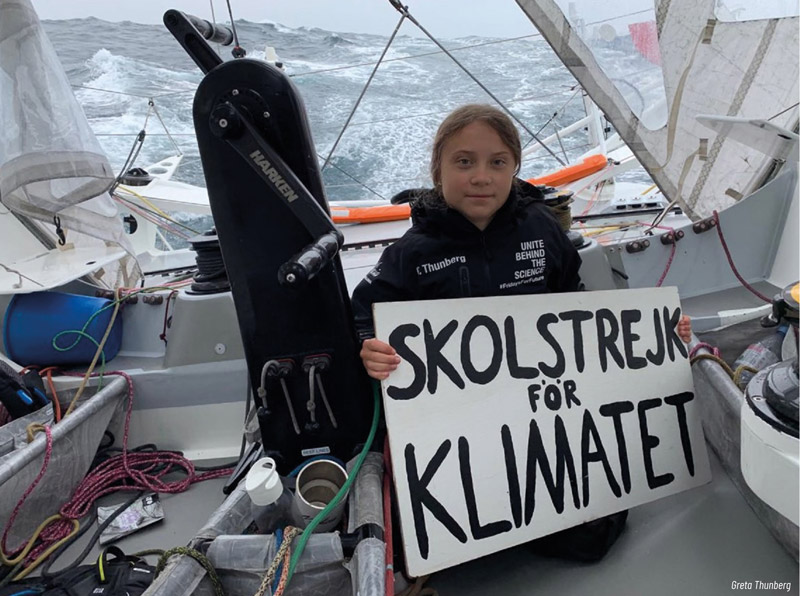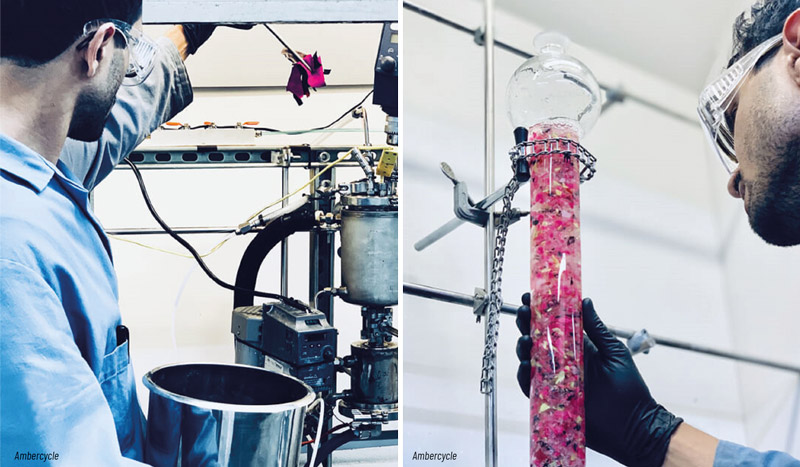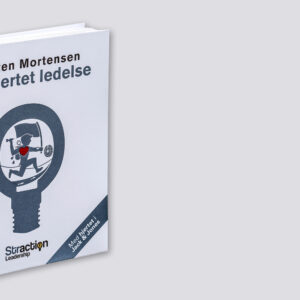Goodness, how the world has changed
We have heard it all before, too – for decades, in fact. While scientists ruminated over the possible effects of our impact on the climate due to centuries of industrialisation, we now see the full consequences playing out before us, and it is not pretty. Unless we contain global temperature rise to 1.5 degrees, the impact will be more than affecting how we dress; a recent research paper published in ‘Nature’ shows that we could expect this to further affect global GDP by 36.4 trillion dollars, not to mention how it will bring our way of life to a grinding halt.
A simple online search finds a plethora of documented evidence of scarred environments and acres of trash courtesy of mankind’s march towards progress. That is not including social tolls and negative impact on cumulative mental health. This is a way bigger problem now that we are more able to quantify it. Suffice to say, this is incredibly overwhelming, and all generations – the younger generations in particular – are letting us know that this is one legacy that they do not want to inherit.
Af Darryl Warren
The numbers do not lie
Data from YouGov, a global public opinion and data company, showed back in 2017 that the proportion of 18 to 24-year-olds turning to vegetarianism for environmental or welfare reasons increased from 9 to 19 percent, and in the same period, according to a platform called Conscious Consumers, Generation Z is the most environmentally and socially ‘aware’ consumer market yet, surpassing the fervor that Millennials have been known for. This is not limited to one generation, though; with social media as a conduit, the larger public has taken it upon themselves to find creative ways to respond. Be it by investing in corporate shares and becoming a voice at shareholders meetings to shift corporate direction to grassroots protest strengthened by social media and internet unity, the results have been more tangible than anyone could have imagined.
We see it in the Extinction Rebellion protests backed by teenage activists like Greta Thunberg that have been taking place in 33 countries around the world, inspiring many generations to work together in concert to press for change. We also see it in the data regarding purchase power, which is shaping to be the new form of effective social protest. The public, recognising that consequences could mean total extinction-level devastation, is taking much more seriously what scientists have been asking of all of us for decades to do: reverse the damage that we have been causing to our planet before it is too late. And the growing urgency underscores that we are, indeed, running out of time.
Change starts with our attitudes
The DIY movement that followed the Great Recession of 2008 triggered a mindset that supported individuality and appreciation of craft and value. It makes sense that the current austerity resulting from global real estate impacts and wage stagnancy coupled with broadcasts of an impending and imminent deep recession have all conspired to reinforce decisions that the population learned in surviving the last economic disaster. This coupled with sustainability initiatives, results in feeding this mindset further and is expected to increase as more industries create and implement approaches that satisfy sustainability goals.
The public is tribal by nature, and conformity will always be part of the equation, even if the latitudes for self-expression are supported. Should economic austerity descend as anticipated, though, adherence to trends will take a back seat as a lower priority, and individuality will reign. The breaking of the rigid collection seasons in fashion favour of continuous merchandise drops is the one area of consumption where industry-wide shifts help the public to disengage from past traditions. This also supports the move toward fashion being more fluid based on lifestyle choices and climate adaptation, reinforcing behavioral modifications that spill into other lifestyle aspects.
As many an industry is joining the public in embracing new approaches and is starting to have a more engros-
sing dialogue on our responsibility regarding gender equity and diversity, we find ourselves and our corporate responsibility under further scrutiny thanks to political upheavals that have upended convention. The changes in the American political climate seemed to embolden perspectives that polarised people within nations. The bravado of the new president of the United States had strong and controversial views regarding climate change that stunned the world. Many nations have been used to the leader of such a powerful and prosperous nation supporting science in the name of reversing the damage we have been doing to the planet. Even if it was token efforts, world leaders and public opinion seemed to be on the same page. But the bold perspectives from the American presidency denying the existence of climate change in the face of a nearly unified global scientific community coupled with the reversal of environmental policies meant to curb the contribution to global warming was met with great shock from other nations that were in unison trying to stop a global catastrophe that has been unfolding before our eyes. The result has galvanised many across the globe who decided that waiting for governments to take the lead will not be enough, and from here we find the growing global sentiment more in unison, if not in war with the old guard; changes needed to be made, and data has shown that the urgency is very much real.

Impact on the supply chain
One of the changes happening is the overhaul of the supply chain model. In this new direction within manufacturing, items that get used get returned and reintegrated into the manufacturing chain to be recycled and reused, minimising waste. Innovations in technical processes regarding materials recycling (such as in textile reclamation) help make this process truly sustainable. Part of what has prevented this before has been technical limitations, but the manufacturing environment has seen a revolution of sorts. One example of note currently takes place in an industry under heavier environmental scrutiny: the clothing industry.
Under current scrutiny for their sizeable impact on the issues surrounding pollution and its contribution to climate change, the fashion industry is showing progress in this particular area that is worth observing. A company called Ambercycle recycles waste polyester in a manner that renders it indistinguishable from virgin material, important for textile manufacturers looking to use existing material rather than draw on further resources and see more material head to the dump. Another company, Evrnu, uses a technical process called NuCycl to purify and liquefy used cotton, transforming it into a new material that has been incorporated into a recent collaborative collection between noted UK fashion designer Stella McCartney and global sportswear giant Adidas. The material that they collaborated on is a blend of new yarn and organic cotton, made into a fabric with complex jacquard knit that actually performs better and lasts longer than the original material. That means it will take longer to wear out, thus reducing consumption. Nike Flyleather tackles the leather industry’s problem of excess scraps by producing a line using a material made with at least 50 percent recycled natural leather fibre. This material is created by combining the scraps with synthetic fibres that are dyed and put on a roll to be cut, offering a similarity to pleather. Adidas has gone the extra mile to produce a new prototype shoe now in beta testing called Futurecraft Loop that is made entirely from one type of plastic designed to be ground up and recycled back into a new shoe when one is done using it. This opens the doorway for 3D printing to become a closed-loop system, allowing a possibility of bespoke closed-loop manufacturing processes for this aspect of DIY design, and that leads the conversation to another possibility that change brings in the supply chain process.
Meanwhile, another alternative to upend the traditional manufacturing/retail model entirely is the rise in manufacturing on demand. One company, Unmade, does this without holding any stock. That is, nothing exists until you place your order and the production process begins. That is because they use industrial knitting machines to produce unique, customisable clothes that are made-to-order, so only the raw materials exist until absolutely needed. What this means is that there is no wasted material siting in storage and thus becomes less susceptible to being unused due to fashion trend shifts. And of course, the earlier example regarding Adidas and Futurecraft Loop suggests the additive manufacturing boom we saw earlier in this century could take on a new life with the access of materials that can be recycled on the spot and remade with 3D printing equipment. This could open the market to sustainable on-demand customisation at a local level as in-house technology matures and becomes more commonplace.
And then there are tools created to encourage sustainability processes with an eye on the more pragmatic and influential aspect: the monetary impact. Chief Sustainability Officer for Kering, Marie-Claire Devaux, created the Environmental Profit and Loss tool, EP&L, which examines and illustrates the value of environmental impacts of business across its entire supply chain (that is, from raw material extraction right through to when it hits the sales floor) in monetary terms. The value of this tool cannot be underestimated, for it has helped them to see where it sources its raw materials so it can be more efficient across the supply chain, going as far as initiating the replacement of conventional materials with alternatives that have a lower environmental as well as economic impact. Should this be made available for other markets in other industry sectors, this could transform industries by streamlining the entire process without creating the kind of economic impact that hampers adoption of the change in the name of our environment. As more and more companies take advantage of technology and approaches that support the larger environmental goals the market is demanding, we can see less and less of our consumption that become landfill fodder and industries making progress towards being part of the solution rather than the problem.

Innovation with material choices
Part of the quest for sustainability also involves providing alternate choices that support changes in consumer fashion habits. Longer-lasting items that become worthwhile investments have opened the door to a new purpose for manufacturing innovation. Again, innovations within the textile industry offer good examples regarding adaptive innovation.
Nanotechnology has brought forth materials that offer antiwrinkle, odour resistant, water repellent and UV blocking capabilities – all of this translates into better care and likelihood of being used and kept rather than discarded. This goes beyond conventional performance, as some textile manufacturers are collaborating with pharmaceutical companies to explore textiles embedded with nanocapsules that can emit medications to help solve medical conditions (imagine underwear with nanocapsules to help to prevent rashes). Some textiles are incorporating nanotechnology to create unique performance aspects, such as self-heating towels or colour-changing capabilities, providing light or even to monitor wear and care, how damp or dry the garment is or how often it has been washed. Unbound has been experimenting with merino wool to make garments that can go for 100 days without washing, thus reducing the need to waste resources at the domestic level, reducing the carbon footprint that normal care imposes.
What may change or, rather, evolve in this area is the constitution of new materials we work with. While many of the sustainable measures involving reclamation and restructuring materials can seem like a good idea, not all alternatives are environmentally sound. The conversation regarding our continued dependence on the use of oil-based plastics is a formidable challenge to innovation. 3D printing tends to utilize plastics, and now we are more concerned with the decomposition of these plastics finding their way into the ocean ecosystem. The recent attention of Garbage Island, the negative impact of ingested microplastics in the food chain and the state of our oceans itself combine to make us question what we use in our everyday lives and what they are made of. This growing awareness is affecting what we choose regarding materials composition, affecting future investment in 3D printing as we look towards alternate materials that are eco-friendlier. As we see further innovation with materials reclamation, it is possible to see new types of polyester fibres that will not shed and plastics that will better degrade and dissolve into the environment, or, failing that, a move towards more organic source materials processed to replace oil-based textiles altogether. Given the growing conversation on the state of our oceans and the interruption that plastics have imposed upon the food chain, this new exploration in materials innovation looks to be a growing possibility. Current evolutions in innovation centered on things such as textile reclamation could be mature enough to address this sooner than we think and may inspire other non-oil-based substitutes to replace oil as the foundation for man-made materials within the larger manufacturing environment.


How companies can ascend
For those looking to connect to this change while doing its part to restore the environment, there is a lot that can be done. Industries at large supporting and contributing to alternate and innovative resource sources will go a long way towards accelerating the progress. Years ago, Project Just attempted to provide a database for the clothing industry that showed more transparency in the manufacturing aspect in an attempt to facilitate responsible manufacturing stewardship before they shut their doors. The concept of a database such as this could have been a valuable resource for manufacturing and supply sources that support sustainability. Now, there is a need for such databases beyond the clothing industry to encourage and support sustainable manufacturing that the public increasingly demands. Companies would do well to create and/or contribute to such a database, so all have access to certified suppliers that provide sustainability and fair-trade options. Supporting industry transparency along with information and resources to elevate their environmental capabilities allows global industries to elevate collective efforts that honor growing consumer demands.
Companies can do more collaborative work with each other in another aspect: material access. They can create joint creation and/or storage of innovative materials and even make it into a co-op option for up-and-coming start-ups to have access to excess material stores. This allows for faster use of leftover raw materials versus burning up natural resources and creating more pollution by always using new materials. And this does not have to only be existing new material, either. Companies can set up centers that can rework existing leftover raw material stores to offer environmentally-sound repurposing and/or reconstituting of materials. They can also create local manufacturing locations to reduce their carbon footprint. Say, for example, a global company is based in London. They could have a product line using local materials and locally made that only sells in London and then have a New York version, a Sydney version, a Mumbai version etc. where each is locally made and sold. Each can adjust based on sales performance and can be a combination of foundation using more common materials that are universal (e.g. steel) and accents that are local specialties (e.g. local wood). This supports local economies, becomes more intimate as a localised brand offering and upholds sustainability in the process by reducing the carbon footprint from excess transportation.
Lastly, companies need not be afraid of robotics, for these can do the type of precision work that translates into maximising output with minimal expenditure. And this does not have to be so mercenarily ruthless, either. Companies can create a technical co-op to share in the costs, so more companies and start-ups have access to sustainability-supporting technology. Companies can also cut down on their carbon footprint within the design process by investing in digital technology that centers on creating virtual samples for the early stage of design conception. Denim manufacturer Soorty recently partnered with Amsterdam-based digital fashion creator The Fabricant to use motion capture, body scanning and 3D animation to make virtual samples possible. No actual textiles are used, eliminating material waste as well as any carbon footprint regarding transporting samples as it could be sent with a click of a mouse. Certainly, other companies can use similar technology to create virtual models, which can be examined via VR technology, avoiding transport impact and manufacturing costs at least until the final stages require viewing a final sample. And again, in the spirit of supporting growing economies, companies could work together to create co-op versions, sharing costs so many can have access to tech that supports industry-wide sustainability initiatives.
However, you want to approach it, one thing is certain: The 21st century has a new identity and it is the best of what we have and is with the best intentions to make up for what we have done and are doing. It is in the spirit of traditional marriage if you will: something old, something new, something bold and something out of the blue. And if it is done right, it will not hurt the environment the way we are still doing it now. Rather, it will be a perfect union of innovation, technology and sustainability without compromising societal function.



















